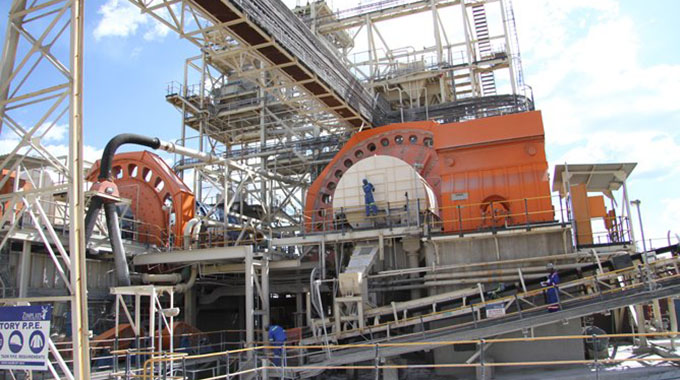Zimplats records 3pc production increase
ZIMPLATS, the country’s largest platinum group metals (PGMs) miner, says mined volumes increased by three percent both year-on-year and quarter-on-quarter on the back of ramp-up in production at Mupani Mine.
The company is a subsidiary of Impala Platinum, one of the largest platinum-producing companies in the world with headquarters in South Africa, the world’s largest PGMs miner.
PGM’s are Zimbabwe’s second largest single export after gold, while mining in general generates more than 80 percent of Zimbabwe’s exports.
Zimplats said milled volumes also improved by one percent year-on-year owing to a mill-reline shutdown, which was completed in the prior comparable period, with a one percent decline versus the prior quarter.
The mined volume was also enhanced by ramp-up in output from pillar reclamation at Rukodzi Mine.
Consequently, Zimplats six element (6E) head grade improved by two percent year-on-year and three percent quarter-on-quarter, benefiting from increased tonnage from higher grade stoping areas at Mupani Mine.
The decrease in concentrator recoveries was offset by higher mill feed grade, and 6E in concentrate production increased.
This comes as Mupani Mine is currently undergoing an upgrade that aims to replace the depleted Rukodzi and Ngwarati mines.
Mupani’s full production is anticipated to reach 3,6 million tonnes per annum by the first half of 2029 financial year.
“Mined volumes increased by three percent both year-on-year and quarter-on-quarter, benefiting from the ramp-up in production at Mupani Mine. Production from Ngwarati Mine, which ceased primary operations in June 2024, was successfully replaced by a combination of the ramp-up in output from pillar reclamation at Rukodzi Mine and production from Mupani Mine,” said Zimplats in its quarterly report to September 2024.
Operationally, Zimplats recorded a six percent increase in operating cash costs from the prior quarter stemming from higher mining production, the strengthening of the South African rand, and timing differences on the replacement of major engineering components.
Quarterly costs decreased by one percent from the prior comparable period due to the implementation of cost-saving initiatives. According to Zimplats transfers to closing stocks from operating costs for the quarter amounted to US$8,6 million due to concentrate stockpiled for the commissioning of the expanded smelter and inventory build-up in the bigger furnace. Cash costs of metal produced decreased by one percent quarter-on-quarter and were eight percent lower year-on-year.
Operating cash cost per 6E ounce, of US$841, was percent higher year-on-year and quarter-on-quarter, respectively, due to the impact on fixed costs of lower 6E metal production.
In terms of capital projects, Zimplats said it cumulatively spent US$413 on the development of Mupani Mine, Bimha Mine upgrade as at 30 September 2024.
A total of US$412 million was spent on the smelter expansion and SO2 (Sulphur dioxide) abatement plant project against a total project budget of US$544 million while US$36 million was spent on the 35MW solar plant project in the period under review.
A total of US$29 million was spent on the Base Metal Refinery refurbishment project, against a total budget of US$190 million.
Commissioning of the expanded smelter commenced during the period under review, and a total of 400 tonnes of concentrate was fed into the new furnace by quarter-end. According to Zimplats, these initiatives coupled with accumulation of concentrate ahead of the smelter commissioning, resulted in a nine percent year-on-year and three percent quarter-on-quarter decrease in metal in final product, with a circa 15 500 ounce differential between 6E in concentrate and 6E in final product for the quarter. However, Zimplats did not manage to conduct exploration activities during the quarter in response to depressed metal prices.
-herald











